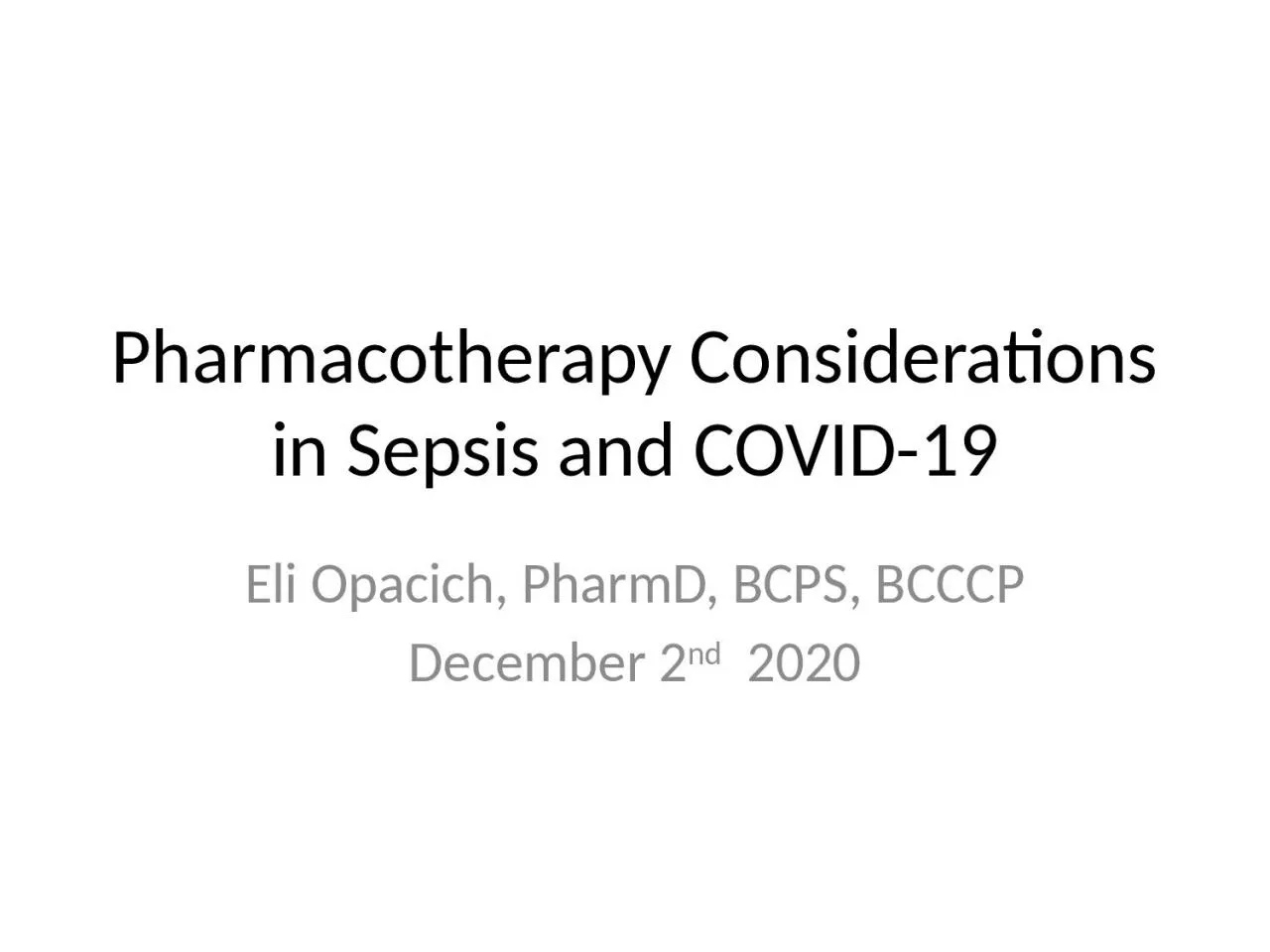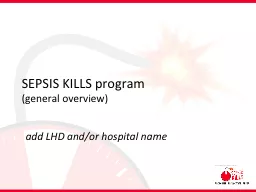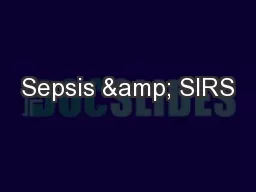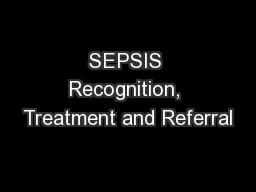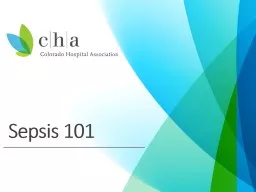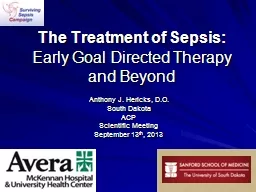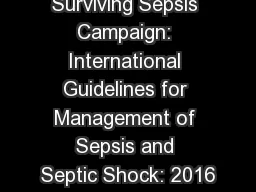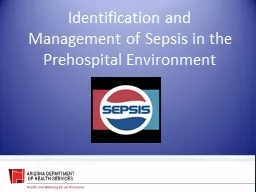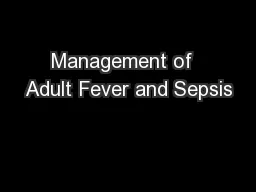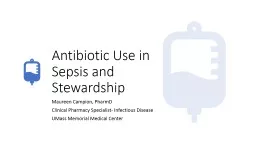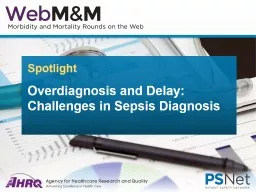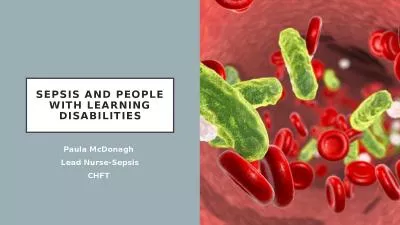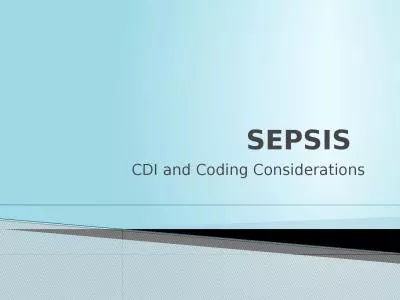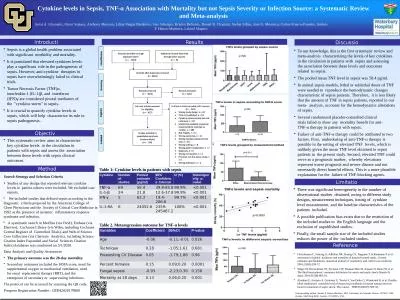PPT-Pharmacotherapy Considerations in Sepsis and COVID-19
Author : RainbowGlow | Published Date : 2022-08-01
Eli Opacich PharmD BCPS BCCCP December 2 nd 2020 Financial Disclosures None Learning Objectives Assess pharmacotherapy updates in sepsis and septic shock Employ
Presentation Embed Code
Download Presentation
Download Presentation The PPT/PDF document "Pharmacotherapy Considerations in Sepsis..." is the property of its rightful owner. Permission is granted to download and print the materials on this website for personal, non-commercial use only, and to display it on your personal computer provided you do not modify the materials and that you retain all copyright notices contained in the materials. By downloading content from our website, you accept the terms of this agreement.
Pharmacotherapy Considerations in Sepsis and COVID-19: Transcript
Download Rules Of Document
"Pharmacotherapy Considerations in Sepsis and COVID-19"The content belongs to its owner. You may download and print it for personal use, without modification, and keep all copyright notices. By downloading, you agree to these terms.
Related Documents

